9. Half-Day Local Tour
TENTATIVE HALF-DAY LOCAL TOUR
1. Sanfang Qixiang (Three Lanes and Seven Alleys)
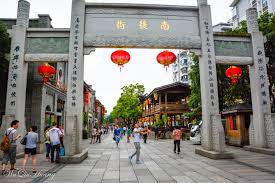
Sanfang Qixiang History & Culture Street lies in the centre of Fuzhou, a city which has a long history of about 2200 years. It covers an area of about 40 hectares and is composed of 3 lanes,7 Alleys and a main street, including Yijin Fong, Wenru Fong, Guanglu Fong, Yangqiao Lane, Langguan Lane, Tower Lane, Huang Lane, Anmin Lane, Gong Lane, Jipi Lane, and Nanhou Street.
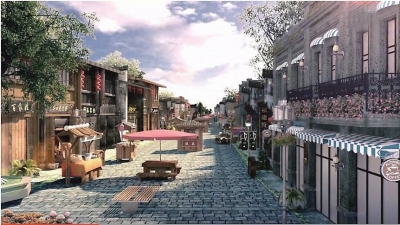 Sanfang Qixiang, dating from Jin Dynasty, was once perfected in Tang & Five Dynasty and stepped into its golden age in Ming and Qing Dynasty. In spite of the long history, its ancient lane layout has been nearly retained loss lessly up to now, making it become the only one “living fossil” of “Li-fang System” among Chinese cities. 200 historic buildings still exist in the lanes, including 9 national key cultural relics protection units and numerous provincial and municipal cultural relics protection units.
Sanfang Qixiang, dating from Jin Dynasty, was once perfected in Tang & Five Dynasty and stepped into its golden age in Ming and Qing Dynasty. In spite of the long history, its ancient lane layout has been nearly retained loss lessly up to now, making it become the only one “living fossil” of “Li-fang System” among Chinese cities. 200 historic buildings still exist in the lanes, including 9 national key cultural relics protection units and numerous provincial and municipal cultural relics protection units.

Those delicate buildings not only embody the brilliance of ancient workmen, but also the vivid lives of residents of this ancient city. As the heart of Min River culture, there are extensive cultural relics and historic sites in this block, including former residence of famous persons and architectures of the Ming Dynasty and the Qing Dynasty. In general, it is an uncommon “Ming & Qing Dynasty Architecture Museum” and compared to a great museum of antique buildings of these two dynasties.
2. Fuzhou Xichan Temple (If time is enough)
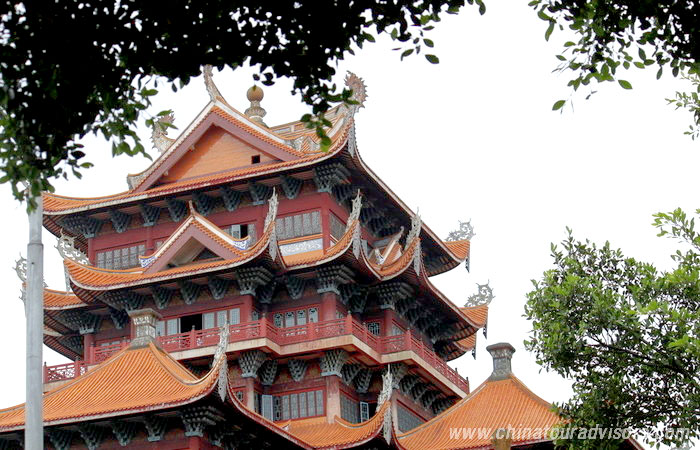 The Xichan Temple stands to the west of Fuzhou city, just near Fuzhou University. It is one of five Buddhist temples and was constructed in the Tang Dynasty. In the temple there are several ancient relics, including imperial handwriting by Emperor Kangxi, murals, a dagoba depicting a Buddhist Monk from the Five Dynasties and others. There are two jade statues of Buddha brought from Myanmar in the Jade Buddha Hall.
The Xichan Temple stands to the west of Fuzhou city, just near Fuzhou University. It is one of five Buddhist temples and was constructed in the Tang Dynasty. In the temple there are several ancient relics, including imperial handwriting by Emperor Kangxi, murals, a dagoba depicting a Buddhist Monk from the Five Dynasties and others. There are two jade statues of Buddha brought from Myanmar in the Jade Buddha Hall.
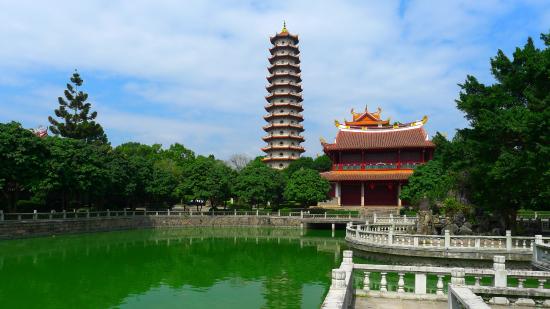 The seated Buddha is 2.95 meters tall, while the reclining one measures 3.7 meters in length. The present name "Xichan temple" originates that there are temples at the all four corners of Fuzhou city, and Changqin temple is in the west, so the name "west temple"(Xichan temple) is acquired.
The seated Buddha is 2.95 meters tall, while the reclining one measures 3.7 meters in length. The present name "Xichan temple" originates that there are temples at the all four corners of Fuzhou city, and Changqin temple is in the west, so the name "west temple"(Xichan temple) is acquired.
Xichan Temple includes ten buildings: Tianwang Palace, Daxiong Precious Palace, Court, Pavilion for keeping Buddhist scriptures, Guest Room, Buddhist room, Fangtai Room, Room for praying to Buddha, Storehouse, Room for Diet, Mingyuan Pavilion, Bell Tower, drum tower, jade Buddha building , Pavilion of the goddess of mercy, Baoen Tower, new room for praying to Buddha, Shangke room , Haihui building. There is a figure of the goddess of mercy with one thousand hands and eyes built with yellow bronze in the Pavilion of the goddess of mercy.
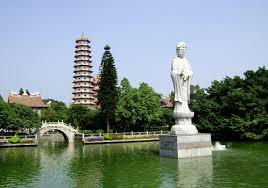 The Baoen Tower in Xichan temple is a conspicuous building in the temple. It was built in 1986, and is a brick tower with eight angles pavilion with antiquity style. It has a height of 67 meters and 15 floors. It has 8 halls inside and 9 corridors outside and is the highest brick tower in the country. The wall of each floor is engraved with Buddhist figures and Buddhist stories by the famous masons in Huian and is dotted with birds and beasts, flowers and fish, too. Hundreds of litchis surrounded the inside of the temple, with elegance and uniqueness. Moreover, there are the relics of white turtle spitting spring, the inscription in the tower of Lanan master ,who is the first master in Tang dynasty, seven-star well in Tang dynasty, the tower of Huiling master in the five periods. Hundreds of litchis surrounded the inside of the temple, with elegance and uniqueness.
The Baoen Tower in Xichan temple is a conspicuous building in the temple. It was built in 1986, and is a brick tower with eight angles pavilion with antiquity style. It has a height of 67 meters and 15 floors. It has 8 halls inside and 9 corridors outside and is the highest brick tower in the country. The wall of each floor is engraved with Buddhist figures and Buddhist stories by the famous masons in Huian and is dotted with birds and beasts, flowers and fish, too. Hundreds of litchis surrounded the inside of the temple, with elegance and uniqueness. Moreover, there are the relics of white turtle spitting spring, the inscription in the tower of Lanan master ,who is the first master in Tang dynasty, seven-star well in Tang dynasty, the tower of Huiling master in the five periods. Hundreds of litchis surrounded the inside of the temple, with elegance and uniqueness.
3. Night Scene of Minjiang River
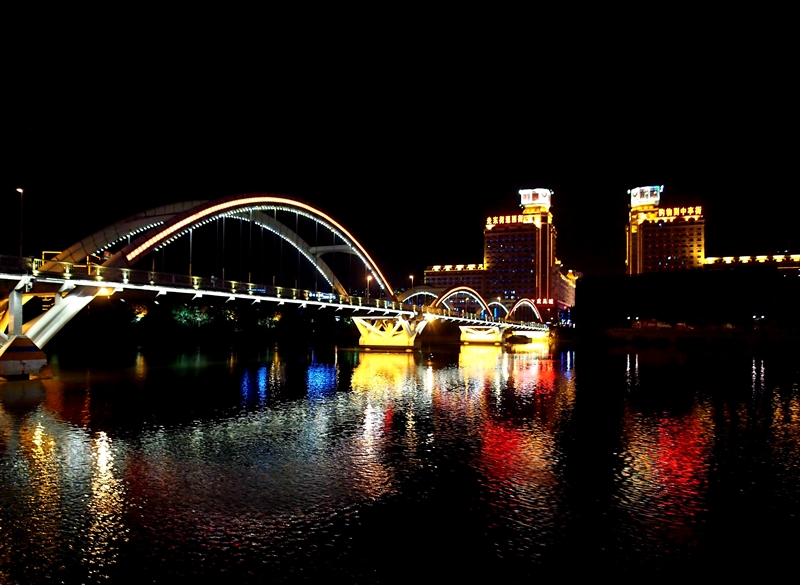 The Min River or Minjiang is a 577 kilometres (359 mi)-long river in Fujian province, People's Republic of China. It starts in the Central Sichuan Province and is a tributary of the Yangtze River. It is the largest river in Fujian, and an important water transport channel. Most of northern and central Fujian is within its drainage area. The ancient Dujianyan irrigation system and the Giant Buddha of Leshan are built into the banks of the Minjiang. It is now heavily developed for hydro-electric power with many dams built on it. We crossed the river on our way South into Fuzhou.
The Min River or Minjiang is a 577 kilometres (359 mi)-long river in Fujian province, People's Republic of China. It starts in the Central Sichuan Province and is a tributary of the Yangtze River. It is the largest river in Fujian, and an important water transport channel. Most of northern and central Fujian is within its drainage area. The ancient Dujianyan irrigation system and the Giant Buddha of Leshan are built into the banks of the Minjiang. It is now heavily developed for hydro-electric power with many dams built on it. We crossed the river on our way South into Fuzhou.
 The provincial capital, Fuzhou, sits on the lower Min River, with its historic center being on the northern side of the river, even closer to its fall into the East China Sea; the location historically made it an important port. The lower reaches of the river are wide and slow moving as it flows to the sea. A lot of bridges have been built here across the river. Lovely views can be had here.
The provincial capital, Fuzhou, sits on the lower Min River, with its historic center being on the northern side of the river, even closer to its fall into the East China Sea; the location historically made it an important port. The lower reaches of the river are wide and slow moving as it flows to the sea. A lot of bridges have been built here across the river. Lovely views can be had here.
